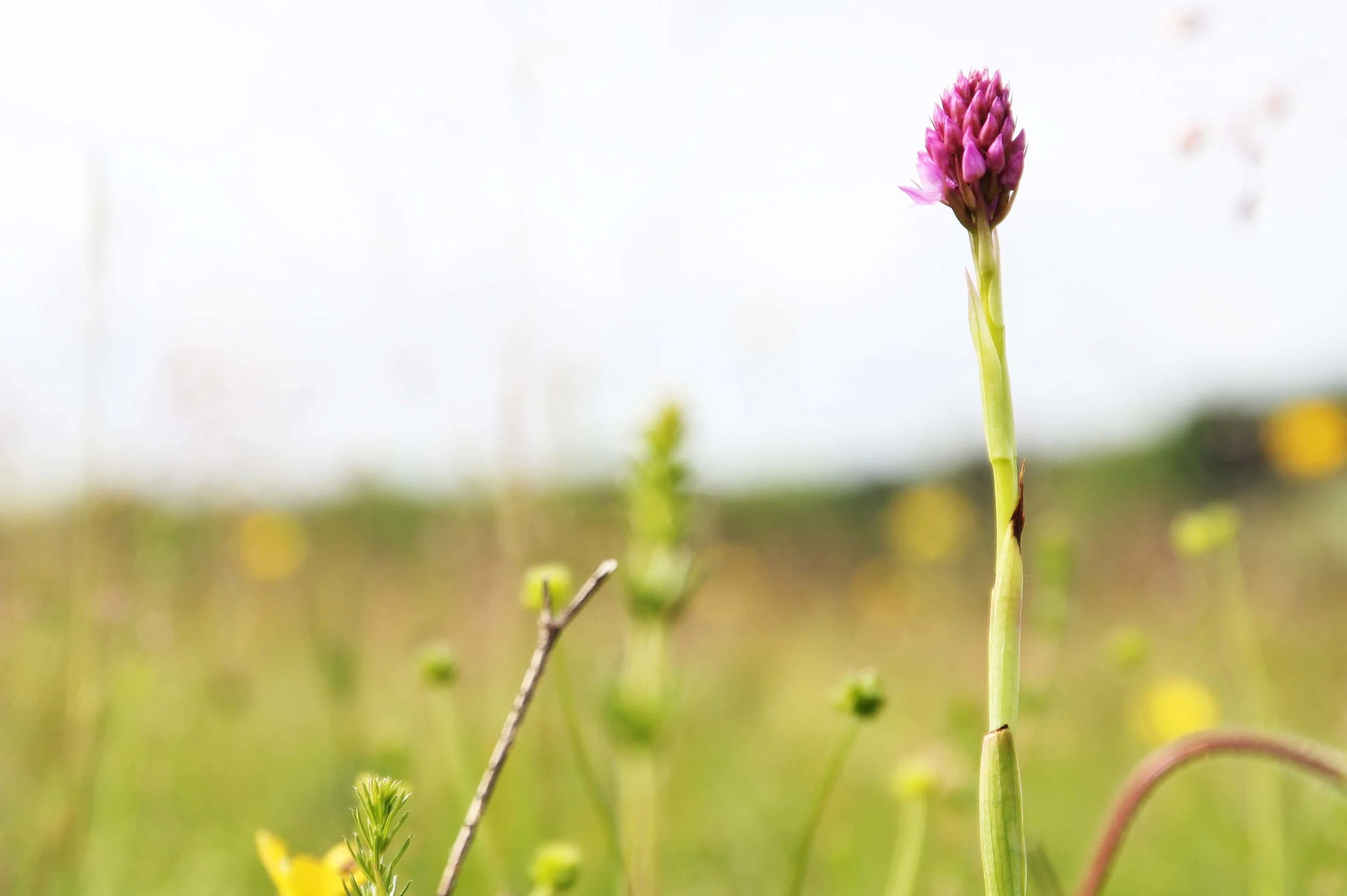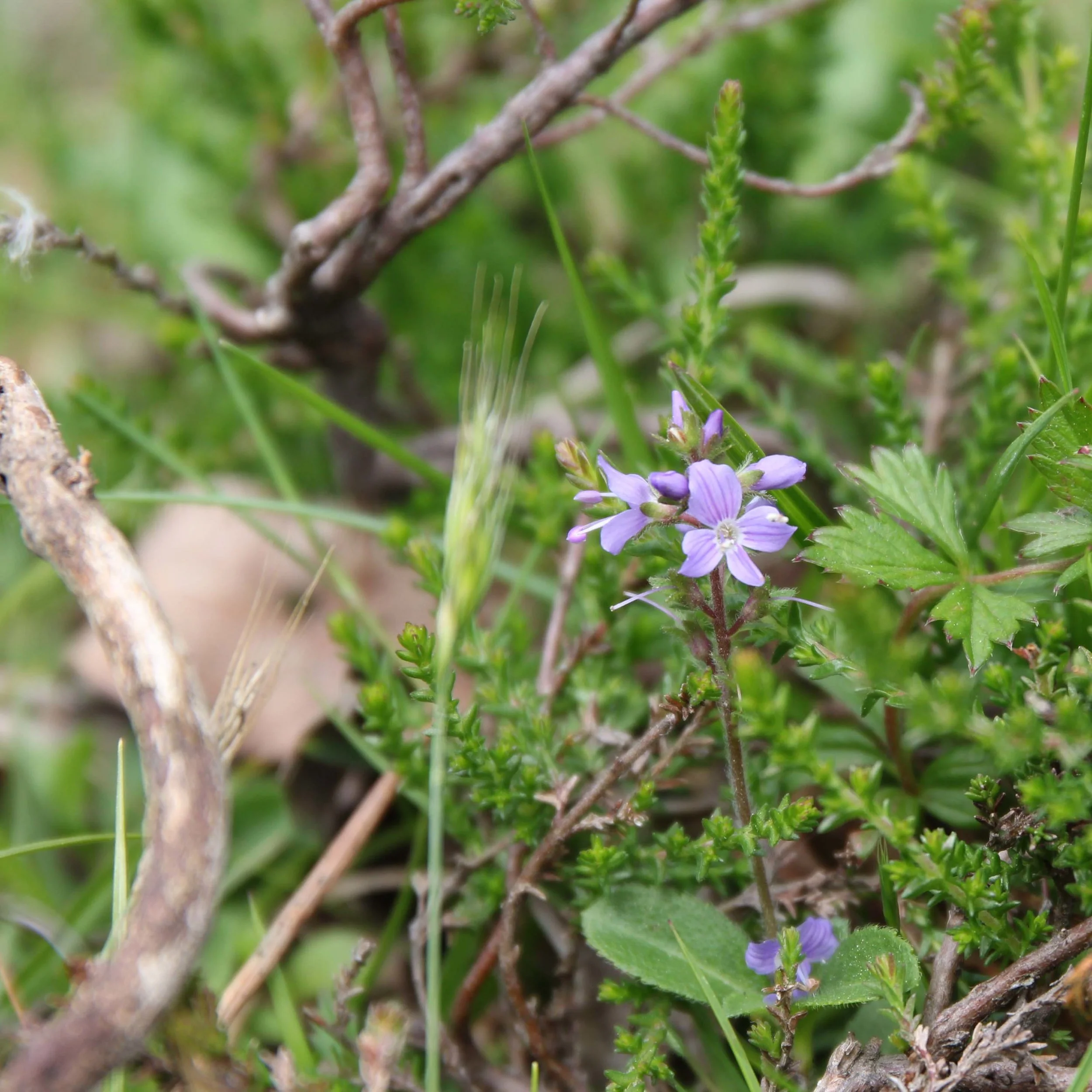Week Three: Coombe Bissett Down - Butterflies, Beetles and Orchids
Owned and managed by Wiltshire Wildlife Trust, this chalk downland flanked by agricultural fields offers a diverse habitat for a vast array of flora and fauna. I could lose hours up here, especially in the summer when the steep sided reserve is awash with wildflowers. The wildlife trust section the reserve off with fences so they can be grazed by the resident cattle and sheep to encourage specific species.
It’s a place for searching the grasses for all sorts of treasures, or just pausing to take in the sweeping views of Wiltshire’s green rolling fields to the soundtrack of yellowhammers and skylarks.
I’m sure it will appear again during the Summer ID Challenge.
Pyramidal Orchid (Anacamptis pyramidalis)
Pyramidal orchid
This striking purple orchid, easily caught my eye, against the yellow dots of buttercup that stretched across the wildflower meadow. It stood tall with it’s pyramid shaped head of leaves swaying slightly in the morning breeze. It’s a common orchid that likes chalk grassland, scrubs, verges and coastal habitats just to name a few. Coping better in mild climates makes it a little bit harder to find in Scotland. You can see this beautiful species at it’s best in June and July, and it’s also worth keeping an eye out for butterflies and moths as it is popular with pollinators.
I identified this pyramidal orchid by using the Picture This app and then double checking with a google search.
Meadow Brown Butterfly (Maniola jurtina)
Meadow Brown Butterfly
I lost a good 15 minutes following this butterfly through the rough grasslands trying to get a photo. It would frequently come to rest but each time it would keep it’s wing closed hiding it’s distinguishing markings to help solve it’s mystery. This velvety brown butterfly is incredibly common, and found in most types of grassy places through the late spring to late summer. The single orangey eye spot on each forewing is it’s most defining feature and when you get a good look at the open wings it makes it easy to distinguish from the similar looking gatekeeper that has two spots.
I identified this beautiful butterfly using my trusty Colins Wild Guide Butterflies and Moths and then checked out my findings on a UK butterfly Facebook group.
Pollen Feeding Beetle
pollen feeding beetle
Now, I’m open to help here, but I think (and after ALOT of trawling through the interenet looking at pollen feeding beetles) that this is the female thick legged beetle (Oedemera nobilis). The thick legged flower beetle, or fat legged flower beetle if you prefer, is relatively common through out the UK. I see plenty of males feeding on pollen in the hedgerows, and you can tell they are males because these are the ones with the thick legs, they look like they’ve spent a lot of time at the gym. The female has much more delicate legs but still has the characteristic green body and longer antennae.
I could be wrong though and please do comment if I am.
Keep an eye out for this iridescent pollen feeder, in hedgerows, grasses and even your garden from April to September.
I identified this creature by typing Green Beetles UK into Google and then comparing photos.






